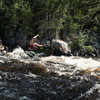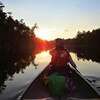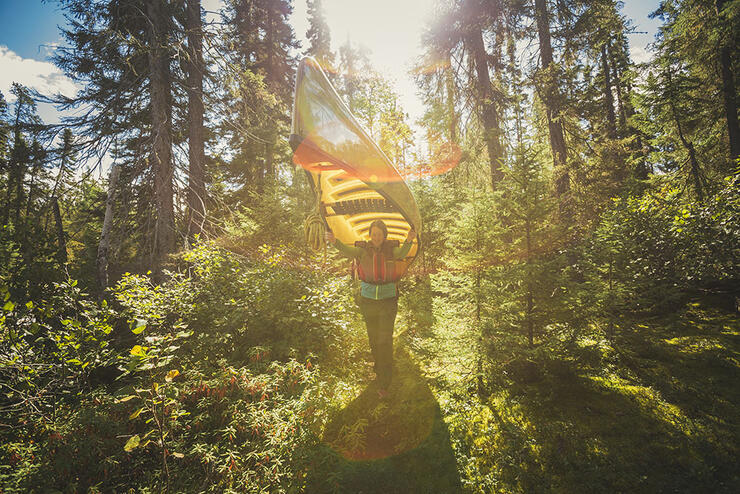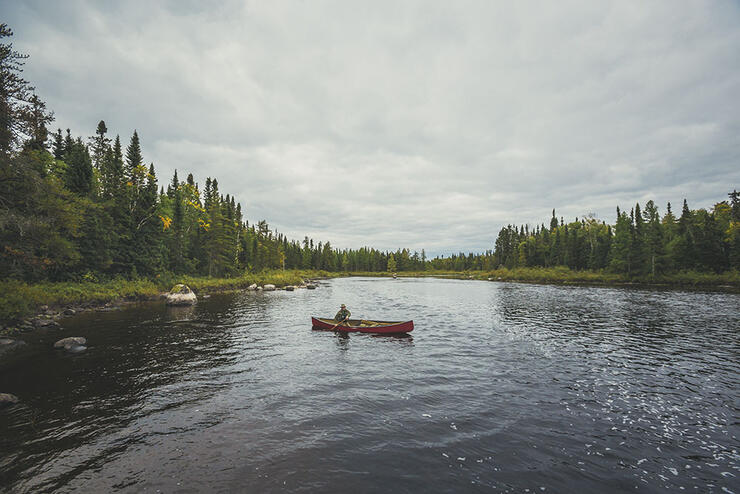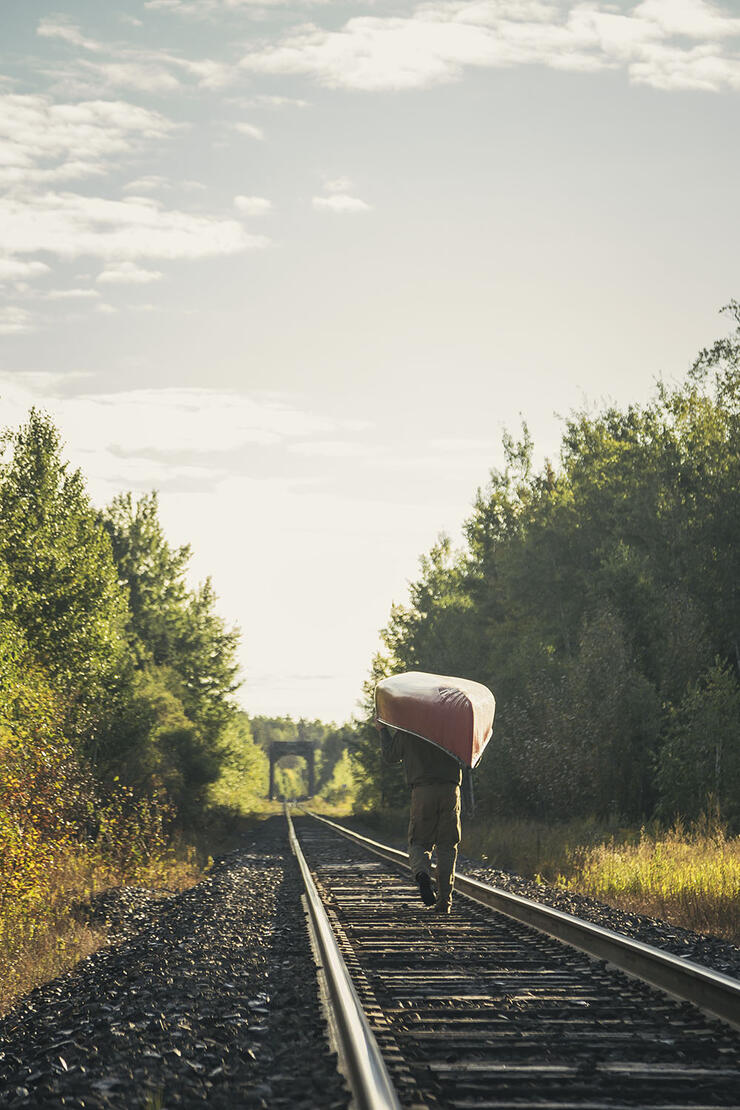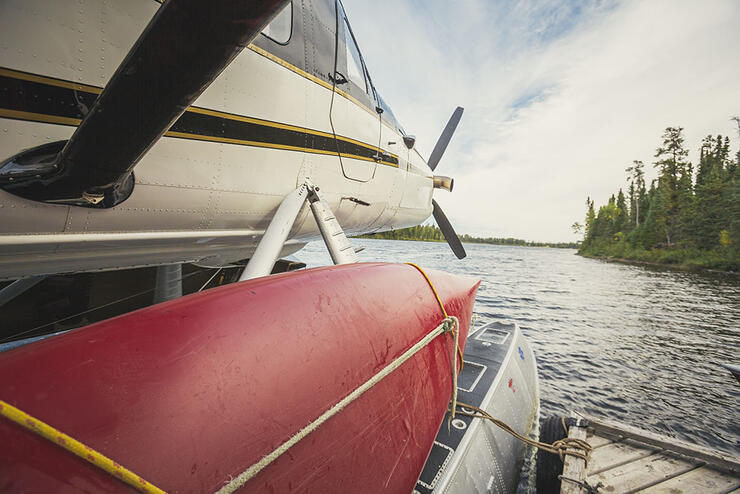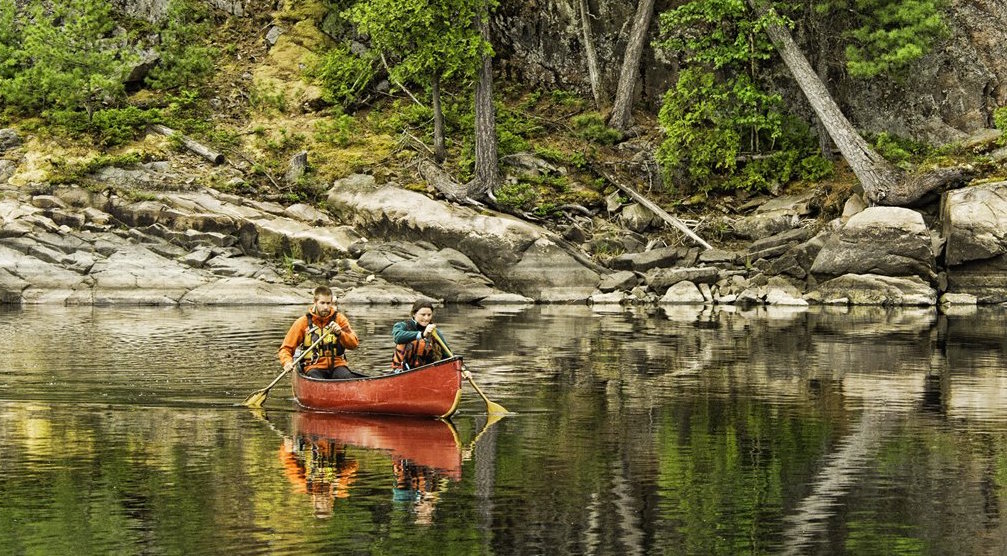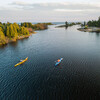
The Ultimate Guide to Canoeing & Kayaking in Wabakimi
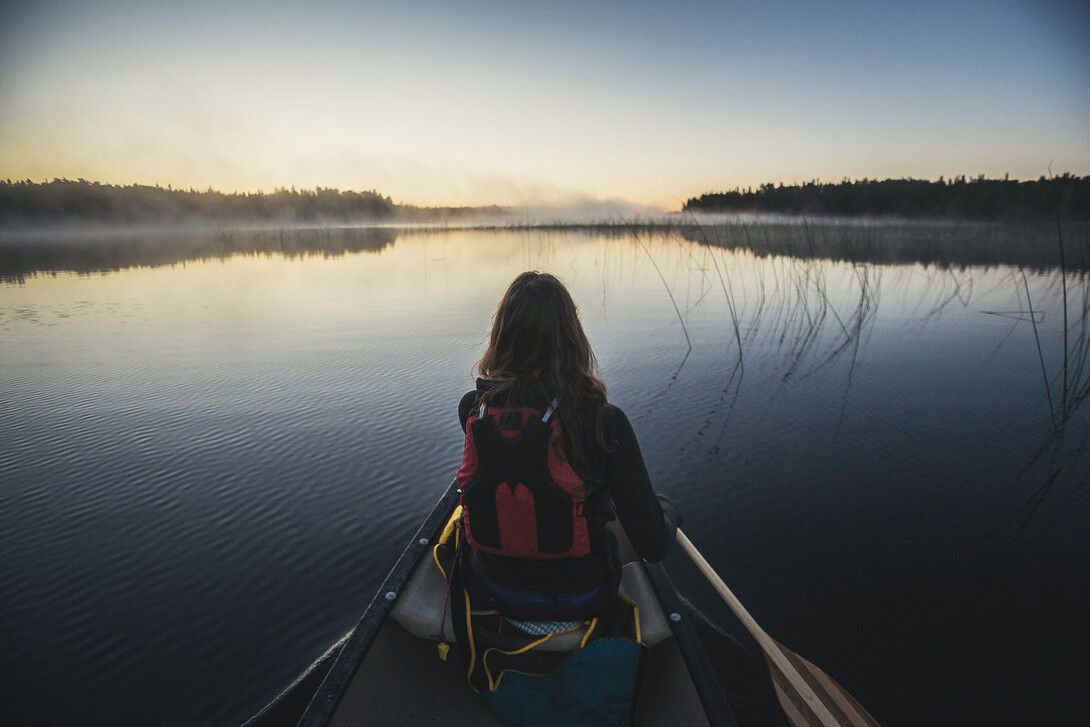
Wabakimi Provincial Park is a vast wilderness area in northwestern Ontario. An abundance of lakes and rivers makes Wabakimi a dreamscape for paddlers; it ranks as one of Ontario’s largest parks, spanning a landscape much larger (and infinitely wilder) than central Ontario’s Algonquin Provincial Park. Such a seemingly remote wilderness is much closer than you’d think. The city of Thunder Bay is your gateway to Wabakimi. Thunder Bay is easily accessible by road, rail and air, and located within a day’s drive of many Midwestern cities. Once you arrive here, it’s only a three-hour drive on Highway 17 and Highway 527 to the park entry point in Armstrong, Ontario, on paved roads.
Wabakimi boasts more than 2,000 km of lake and river canoe routes and more than 500 backcountry campsites. Planning a paddling adventure in such an immense landscape with so many interconnected waterways can be intimidating. We’re here to help! This article provides an overview of the best Wabakimi canoe routes, outlining a selection of great waterways. We’ve also identified Wabakimi outfitters offering canoe rentals and guided trips, and picked out some choice destinations for Wabakimi kayaking, too. It’s time to start planning your paddling adventure of a lifetime in Wabakimi Provincial Park.
Wilderness Rivers of Wabakimi
Wild rivers flow across the boreal landscape of Wabakimi Provincial Park like pulsing arteries. There is a river for every type of wilderness paddler in the Wabakimi backcountry, ranging from relaxing, smooth-flowing waterways to challenging and exciting whitewater descents. Here are descriptions of some of Wabakimi’s best rivers for canoeing.
Allanwater River
The Allanwater River is a great whitewater river for advanced wilderness canoeists in Wabakimi Provincial Park. You can paddle the Allanwater River any time during the canoe season. VIA Rail is the easiest way to access the river, loading in Armstrong (see the list of outfitters below to help you make access arrangements). You can also charter a floatplane from Armstrong to the Allanwater River at Kawaweogama Lake. It’s a five-day downstream run from Allanwater Bridge to Wabakimi Lake. From there you can veer east, eventually returning to Armstrong, or lengthen your trip by descending the Ogoki River to Whitewater Lake.
Flindt River
The Flindt River flows along the western boundary of Wabakimi Provincial Park. It’s a pool and drop river with portages around all rapids and falls, making it a good choice for wilderness canoeists who would prefer to avoid whitewater. Get on the Flindt River from the VIA Rail whistlestop at Flindt Landing. From there, it’s a four-day downriver trip to Wabakimi Lake, where you can continue your journey back to Armstrong, extend your trip on the Ogoki River or loop back to the railway.
Palisade River
The Palisade River is named for its steep and stunning shoreline rocks, surrounded by a verdant boreal forest of spruce, birch, and cedar. It serves as a connector river, linking the core of Wabakimi, including Kenoji and Burntrock lakes. Expect great scenery and solitude on the Palisade. Long-distance trippers can use it to access even more remote lakes and rivers, including the Misehkow River.
Boiling Sand River
This small waterway flows from the VIA Rail crossing at Collins to Smoothrock Lake, in the southeastern corner of Wabakimi. It’s a great way to get a taste of the Wabakimi wilderness, and provides numerous options for connecting lake and river canoe routes.
Misehkow River
This tributary of the Albany River drains the northwest corner of Wabakimi Provincial Park. The easiest way to get here is to charter a floatplane to Rockcliff Lake. Expedition paddlers can use the Misehkow as a link between Wabakimi and the Albany, an immense waterway that cuts across Northern Ontario and offers immense potential for wilderness canoeing. The Misehkow is known for its solitude, great wildlife (moose are especially abundant), and feisty whitewater. This challenging river is not for the faint-hearted.
Kopka River
The Kopka drains Wabakimi and flows just south of the park boundary, feeding into Lake Nipigon. It’s a moderate whitewater river known for its awesome waterfalls—and notorious “mountain goat” portages. The Kopka River makes a great challenge for advanced wilderness paddlers looking for a rough and ready Wabakimi canoe route.
Wilderness Lakes of Wabakimi
The beauty of Wabakimi for many wilderness paddlers is that most canoe routes involve both rivers and lakes. However, with careful planning lake paddlers can map out routes that suit their preference. Here’s an overview of some of Wabakimi’s best lakes for paddling.
Wabakimi Lake
Wabakimi Lake acts like a crossroads of this wilderness canoe area, with paddling options radiating in all directions. Wabakimi Lake consists of two parts–the main lake as well as Lower Wabakimi, which is connected by narrows. These sprawling bodies of water are dotted with islands. The shoreline is a patchwork of mature boreal forest and smooth Canadian Shield outcroppings, making for excellent camping. Wabakimi Lake is a popular destination for fly-in canoe trips; with plenty of shoreline to explore, it is a great destination for a fly-in kayak trip as well.
Smoothrock Lake
This immense lake lives up to its name with plenty of exposed, glacier-polished granite, making it outstanding for wilderness camping. Smoothrock Lake is relatively easy to access, either by way of the VIA Rail stop at Collins and the Boiling Sand River, or starting from the road access point on Little Caribou or Caribou lakes, just west of Armstrong. Plenty of shoreline means you could explore Smoothrock Lake for days.
Whitewater Lake
This remote lake in the northeast corner of Wabakimi is graced with countless islands and a mixed shoreline of smooth rock and sand beach. Getting to Whitewater Lake can be challenging or easy, depending on your mode of access. The simplest option is to charter a floatplane from Armstrong. Or, if you have the time and motivation, you can paddle to Whitewater Lake as part of a Wabakimi canoe trip, by way of the Ogoki River and Oliver Lake (best for experienced river paddlers) or a portage route from the northern outlet of Smoothrock Lake. Either way, Whitewater Lake is a treat; one highlight is the abandoned Wendell Beckwith homestead, featuring the wilderness architecture of a brilliant mind who believed Whitewater Lake was the “centre of the universe.” See for yourself if Beckwith was correct. But hurry, the intricately built cabins are being left to rot.
Brennan and Granite Lakes
These interconnected lakes on the Allanwater River are joined by several impressive waterfalls and rugged portages. You could charter a floatplane from Armstrong and spend days exploring diverse shorelines (Granite Lake is particularly gorgeous with many islands and steep, densely forested shores), or integrate these lakes as part of a longer Wabakimi canoe route (such as the Allanwater River).
Caribou Lake
Caribou Lake falls just outside the eastern boundary of Wabakimi Provincial Park, but it serves as the only entry point for paddlers who wish to access the backcountry by road. You have two options: Little Caribou Lake is a narrow, sheltered body of water that’s safer to navigate in windy conditions; and Caribou Lake is a much larger lake that allows for portage connections to Smoothrock Lake. Both are accessible by a gravel road leading west of Armstrong; contact a local outfitter for vehicle shuttles and secure long-term parking.
Flindt Lake
This lake is part of the Flindt River system, and provides access to dozens of other smaller lakes by way of portages. Like so many other Wabakimi lakes, Flindt Lake is renowned for its fishing for walleye and trophy pike.
Kayaking in Wabakimi
Wabakimi Provincial Park is beloved by canoeists–but its largest lakes are ideally suited for exploration by sea kayak. Charter a floatplane from Armstrong and sea kayak Wabakimi’s freshwater jewels, such as Wabakimi and Whitewater lakes. If you’re willing to carry your kayak on a few portages, it’s also possible to kayak into the Wabakimi backcountry starting at Caribou Lake, with only a few short portages to the sprawling waters of Smoothrock Lake.
Wabakimi Canoe Rentals and Outfitters
Armstrong-based Wabakimi Outfitters and EcoLodge is your best source for canoe rentals, route planning and outfitting. Owner Bruce Hyer has a long history in the area, having explored Wabakimi extensively before advocating for its expansion in the 1990s. Wabakimi Outfitters provides top-of-the-line lightweight canoes and backcountry gear, along with vehicle shuttles. They can help you set up VIA Rail train shuttles as well as make arrangements for floatplane dropoffs and pickups for fly-in routes throughout the area. What’s more, the company’s eight-room ecolodge on Mattice Lake is a great place to start or finish your trip. Guided Wabakimi canoe trips and Lake Nipigon kayak trips are also available.
Wilderness Supply also offers canoe and kayak rental in nearby Thunder Bay, making this another option for self-sufficient paddlers with the ability to car-top their rental boat to Wabakimi.
Getting to Wabakimi Provincial Park
As remote as Wabakimi Provincial Park looks on the map, there are plenty of convenient ways to access the park depending on your time, budget and desired experience. Many Wabakimi paddlers plan a route to mix and match different forms of access and egress, such as train-in and drive-out or drive-in and fly-out.
Road Access
The cheapest and easiest option for a Wabakimi canoe trip is to start from Little Caribou Lake, located less than 10 gravelled kilometres west of Armstrong on Caribou Lake Road. You’ll want to book a shuttle with an outfitter like Wabakimi Outfitters or Mattice Lake Air to drop you off and securely store your vehicle while you are exploring the backcountry. A 40-km drive on Airport Road leading east from Armstong provides access to the Pikitigushi River, and connections to canoe routes on the east side of Wabakimi Provincial Park.
Train Access
There’s something special about loading your canoe and gear into a boxcar and accessing your canoe trip by rail. The VIA Rail passenger service passes through a small station in Armstrong and along the southern fringe of Wabakimi Provincial Park, as part of its route across Canada. Book your tickets online and work with a local outfitter to plan a route and securely park your vehicle while you’re away on a trip. You can also load your canoe and board the train in Toronto, Winnipeg, Sudbury or many other locations along VIA’s Canadian route. Remote pick-ups are also available; book your tickets in advance or simply flag down the train from a safe location on the railway siding. Popular drop-off and pick-up locations include Schultz’s Trail, Allanwater Bridge and Flindt Landing.
Floatplane Access
Armstrong’s Mattice Lake Air is your ticket for an amazing Wabakimi fly-in canoe trip. The company works closely with Wabakimi Outfitters to arrange for air service to and from the Wabakimi backcountry on board classic Canadian floatplanes, including deHavilland Beavers and Otters. You can also make arrangements to fly into a remote outpost camp owned by Mattice Lake Air or Wabakimi Outfitters for a cabin-based paddling adventure. Similarly, Wilderness North offers all-inclusive, fly-in paddling adventures based out of a comfortable lodge on Wabakimi’s remote Whitewater Lake.
Reservations
Park permits are required for backcountry camping in Wabakimi Provincial Park. You can make your booking at Ontario Parks’ online reservation system within two weeks of your departure date or by calling the park office at 807-473-3031. Permits can also be purchased from local outfitters.
Wabakimi Canoe Routes Maps
Ontario Parks has produced a handy Wabakimi Canoe Trip Planning Map that shows typical routes, portages and some campsites across the entire park. This is a great preliminary resource for planning a route and securing large-scale topographical maps for navigation while on the water. For more detail, check out the exhaustive canoe route maps compiled by the non-profit Friends of Wabakimi. This membership-based organization provides expert trip-planning advice for canoe expeditions across Wabakimi and the surrounding area.
Recommended Articles

Philip Edward Island Camping Guide

Easy River Tripping

Killarney Canoe Trips
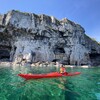
Ontario’s Blue-Water Lakes
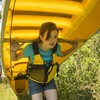
It's Time for a Paddle
The Spanish River
Ontario’s Moose Hotspots
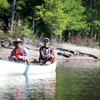
Find Wilderness South of Algonquin
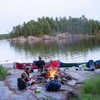
Best Sites on the French River
Sun and Sand
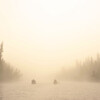
Escape the Crowds
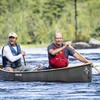
Quetico’s Best Canoe Routes
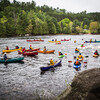
Get On The Water
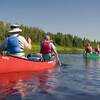
Missinaibi River Canoe Trip
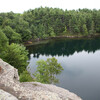
Hike-in or Paddle-in campsites only
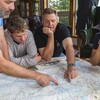
Best Canoe Maps in Ontario
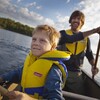
Paddling Laws

Temagami Canoe Trip Guide
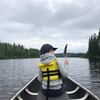
Paddle The Lakehead
